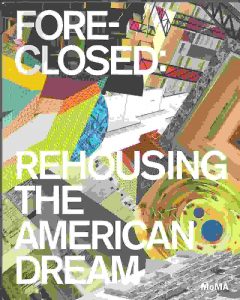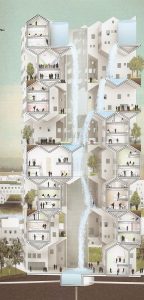 The foreclosure crisis in our country has prompted judges, legislators and lawyers to rethink deeply embedded beliefs about mortgages in default and loan modifications. Settlement agents classically advise borrowers signing loan documents that “to stay you have to pay,” but both slowly and radically, practices are changing. New laws and procedures around the country are creating a developing culture of relief and forgiveness in the home mortgage environment.
The foreclosure crisis in our country has prompted judges, legislators and lawyers to rethink deeply embedded beliefs about mortgages in default and loan modifications. Settlement agents classically advise borrowers signing loan documents that “to stay you have to pay,” but both slowly and radically, practices are changing. New laws and procedures around the country are creating a developing culture of relief and forgiveness in the home mortgage environment.
Responding to the crisis, in 2009 the New York Museum of Modern Art commissioned five teams of architects, urban landscapers and other visionaries to study and re-imagine five suburban areas damaged by foreclosures in varied geographic regions: The Oranges, New Jersey: Temple Terrace, Florida; Cicero, Illinois; Keizer, Oregon; and Rialto, California. By 2011 when the teams exhibited their visions, these regions were suffering foreclosures up to 11.4%.
Stunning Visions
The teams presented their visions through models, drawings, animations, illustrations and written reports. These media formed an exhibit that displayed at the Museum of Modern Art in the Spring and Summer of 2012 entitled Foreclosed: Rehousing the American Dream. Consistent with the overall theme, each vision of re-imagined suburban life focused on relatively high density communities: mixed use of apartments, retail shops and offices. Varied photographs of each team’s renderings are contained in this article, and a companion volume is available from Amazon.com.
 As expected, these visions of reimagined American life are stunning. Clean, modern, multi-unit structures replace blighted suburban sprawl. Parks and pleasant walkways amble through the cityscapes. In Keizer, a waterfall tumbles down the heart of a highrise apartment. Except for Rialto, all of the teams presented living space alternatives to the classic single family home of the American imagination: a tidy box or a McMansion, with its own lawn, driveway and white picket fence. Even in Rialto such houses were the homes of last resort. The exhibit by its very name envisions a change to the American Dream: where the focus is on the communal, not the individual.
As expected, these visions of reimagined American life are stunning. Clean, modern, multi-unit structures replace blighted suburban sprawl. Parks and pleasant walkways amble through the cityscapes. In Keizer, a waterfall tumbles down the heart of a highrise apartment. Except for Rialto, all of the teams presented living space alternatives to the classic single family home of the American imagination: a tidy box or a McMansion, with its own lawn, driveway and white picket fence. Even in Rialto such houses were the homes of last resort. The exhibit by its very name envisions a change to the American Dream: where the focus is on the communal, not the individual.
But Are We Ready To Let Go?
No matter how impressive the visions from Foreclosed, the ideas expressed become irrelevant if there is no real chance that Americans wlll allow their Dream to change. The concepts of liberty and unlimited access to resources are dominant in our emotional landscape. Access to supermarkets, big cars, guns and single family homes is core to our national self image. Will our country ever evolve to the point that any of these deeply embedded values lose their grip on us? Are efforts like Foreclosed: Rehousing the American Dream meaningful labors or hopelessly out of touch?
I’d like to hear what you think. Please leave a comment here or share on Facebook, Twitter or Google+.
